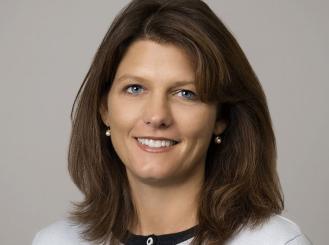Feb 02, 2015
By Shira Klapper, Senior Writer/Editor
A new study in the Journal of Oncology Practice (JOP) set out to see how often fertility discussions were being documented in eligible patients’ charts. The study, published online, ahead of print, December 30, 2014, found that of the 231 patient records examined, 26% had documented discussions of fertility risk, 24% had documented discussions of fertility preservation, and 13% had documented referral to a fertility specialist.
The study, “If You Did Not Document It, It Did Not Happen: Rates of Documentation of Discussion of Infertility Risk in Adolescent and Young Adult Oncology Patients' Medical Records” gathered the patient records from four cancer centers.
According to study first author, Gwendolyn P. Quinn, PhD, fertility preservation is often the number one priority among adolescents and young adults with cancer; “young adults” is defined as those age 15 to 39.
In 2013, the American Society of Clinical Oncology (ASCO) issued updated guidelines about the importance of early attention to fertility issues in cancer patients. The guidelines state that, as early as possible, physicians should address fertility risk and fertility preservation options, and/or make referral to a fertility specialist for all patients of childbearing age, and that all of these discussion should be documented.
While none of the four cancer centers in the study participate in the Quality Oncology Practice Initiative (QOPI), ASCO’s physician-led quality reporting and improvement tool, the current JOP study used chart-abstraction methods employed in QOPI. (Regarding the rate of documentation of fertility conversations, QOPI sets a goal of 80% among participating practices.)
Needed: streamlined processes to make it easier for busy doctors to have fertility conversations
Dr. Quinn is careful to point out that the study’s aim was not to place the onus on doctors, but to get a sense of the baseline rate of documentation.
“I want to emphasize that the point of the study was not to say that physicians are not documenting fertility conversations,” said Dr. Quinn. “The point was to establish a baseline of what these rates are so then we can go back, put our thinking caps on, and identify ways that institutions can make it easier for physicians to have these conversations and streamline the process for documentation.”
Dr. Quinn also stated her belief that actual conversations about fertility are likely happening at a rate higher than documented.
“I suspect that physicians are having these conversations and making referrals more than these numbers suggest,” said Dr. Quinn. “But the copious amount of details that needs to be in the record of a patient with cancer regarding their treatment and their diagnosis probably makes it difficult for physicians to add yet one more thing.”
Women and Latinas less likely to have documented conversations about fertility
When the data was separated out by patient characteristics, the researchers found a significantly lower rate of documentation in the charts of women, compared to men; Latinas, compared to white and black women; and patients who already had children.
In the study, the authors write that these disparities may be due to some misconceptions among physicians. For example, physicians may think that patients who have children do not prioritize future fertility and that Latina women, who are more likely to be under- or uninsured, will not have the finances to pay for fertility treatments.
Some of these preconceptions are due to incomplete knowledge on the part of the physicians. For example, physicians may worry that fertility preservation for women takes too much time and delays cancer treatment. However, as Dr. Quinn pointed out, recent technological advances in fertility medicine have made the ovarian stimulation process quicker than even a few year ago.
But even when physicians’ preconceived notions about patients are true—there is not enough money for fertility treatment, the patient cannot spare the time to undergo egg harvesting—research shows that patients benefit from merely having these conversations.
“Quality of life is significantly improved in patients who had this conversation and had an opportunity to grieve,” said Dr. Quinn. “So they’re not wondering five years later, ‘how come nobody discussed that with me at the time?’ It’s a win-win situation. Every patient can benefit from a discussion about this.”
Gwendolyn P. Quinn, PhD, is a Senior Member of the Department of Health Outcomes and Behavior in the Division of Population Science, a Member of the Adolescent and Young Adult Program, and the Director of Survey Methods Core at the Moffitt Cancer Center, in Tampa, Florida. She is also a Senior Professor in the Morsani College of Medicine at the University of South Florida, in Tampa. She has been an ASCO member since 2008 and is a member of the Fertility Preservation Committee.
Source
Read the abstract of the original JOP article.
View the PDF of the original JOP article.
Quinn GP, Block RG, Clayman ML, et al. If you did not document it, it did not happen: rates of documentation of discussion of infertility risk in adolescent and young adult oncology patients' medical records. J Oncol Pract. Epub 2014 Dec 30.
The Exclusive Coverage series on ASCO.org highlights selected research from JCO and JOP with additional perspective provided by the lead or corresponding author.
@ 2014 American Society of Clinical Oncology


